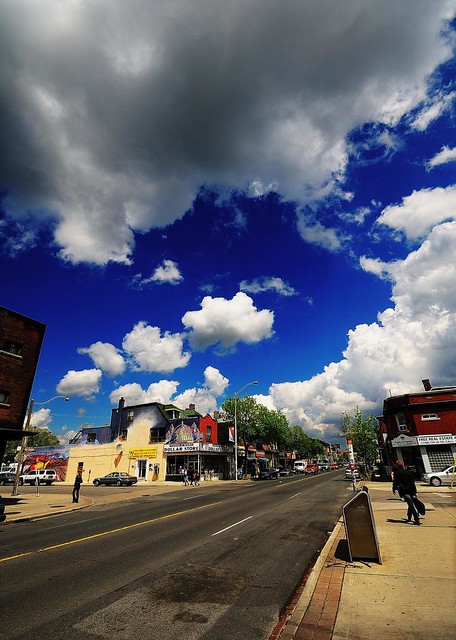
Nikon D300, Sigma EX 10-20 f4-5.6 HSM
Over the last couple days I've had a chance to pick up a pair of relatively unloved Nikon bodies for next to nothing. Yesterday's score was a Nikon F80 for all of $10, today's was a D200 for $100. Both of these bodies are well worth owning, but are often maligned for certain design faults.
The F80, introduced in 2000 as Nikon's high-end consumer body, under the F100 and the lingering F90x in the line. It's a very compact body (slightly larger than a D5300), offers a proper pentaprism finder, dual control wheels and full VR and AF-S support. If you are a Nikon shooter and use AF or CPU-Equipped MF lenses (including Zeiss ZF, Voigtlander SLII and Samyang AE lenses), this is your cheapest and best entry into shooting film. It's weakness is simple, no support for metering with Non-CPU lenses, and being the first body at this level to lack that feature as it's predecessor, the F70, supported AI metering. This would be a long-standing beef at this level of body, the F80's successors (D100, D70, D70s, D80, D90) would all lack it until the feature was re-introduced with the D7000 a few years ago. It's also got somewhat pedestrian AF (the same basic 5-point AF that was unloved on so many Nikon DSLR's), a really limited framerate (2.5fps). Upsides include a solid 1/4000 max shutter and 1/125 flash sync. Recall this is a film camera, so you can get shots with those limits that would require a 1/8000 max shutter or 1/250 sync on Digital, thanks to the forgotten ISO range, ISO 50 film is a wonder, and pulling it to ISO 25 nets you even more. Batteries are the expensive CR123's, which do last a while, but you can add an MB-16 for AA support, but sadly no vertical release. Since this is one of only 4 fully-featured film bodies which support modern VR lenses (the F5, F6 and F100 are the others, the F65 and F75 also support VR, but not necessarily AF-S and are crippled in other ways) it's probably your best starter option if you have a nice selection of modern AF-S and VR lenses. Do note that because of the small size, big AF-S lenses will be a little unwieldy on it, I tried out a 16-35VR and found it slightly awkward in terms of handling.
The D200 was a smash hit for Nikon when it arrived, but it would be quickly eclipsed by its successor, the D300, and then quickly forgotten outside of a legion of users who were satisfied and didn't need to upgrade. When it was introduced, it was a huge upgrade over the earlier D100 and D70(s), offering a F100-level build & ergonomics, the first truly great finder in a non-Pro Nikon digital, very good IQ, upgraded AF and a solid 5fps framerate, again the first fast non-Pro Nikon digital and non-CP/AI metering, finally reappearing in the non-Pro line. Once people got their hands on it, they quickly discovered that the upgraded AF was pretty much the old 5 point AF unit originally from the F80, just with some extra points added for additional coverage and so the promised AF upgrade really didn't exist. This was the first of several Nikon's to use Sony's 10MP CCD sensor, a brilliant sensor at low ISO's and with improved high ISO performance compared to the older 6MP sensor. Once the D300 arrived with the 12MP CMOS sensor, the 10MP sensor was widely considered to be wildly obsolete and well avoided, a pity for a sensor which delivered excellent results at lower ISO's and offered native ISO 100, which the newer CMOS sensors did not.
For me, the F80 is a toy, for playing with AF lenses on film, the FM remains my primary film body. The D200 was bought as an Airshow camera, to shoot the CIAS in concert with my Nikkor 300/4.5 AI'd, as it cost me about as much as the batteries I'd need to do that with the X-E1, and will do better anyways. I also plan to use the D200 to beta-test the idea of a split system. I've been planning on adding an X-T1, but for some of my needs a DSLR would just be better. if the D200 handles those needs well alongside the X-E1, I'll be looking at getting another D7100 as I do miss that camera (Oddly I don't miss the D600, probably sense I really just didn't get along with it). I don't expect to dump my Fuji kit, but it may stay as a light carry kit for my general shooting rather than as a true primary kit.
No comments:
Post a Comment